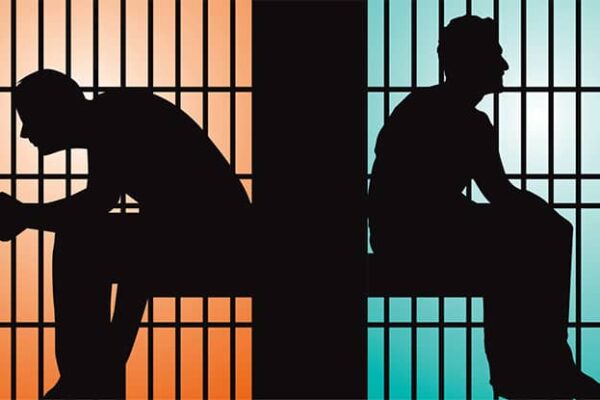Verbal intelligence is the ability to clearly and effectively express thoughts through words. It encompasses a wide range of speech-related skills, from constructing grammatically correct sentences to selecting persuasive arguments tailored to a specific audience. This type of intelligence is essential not only for professional activities but also for interpersonal communication, as language serves as […]
Role-playing as a way to a deeper understanding of your partner
Role-playing in relationships is a way of interaction between partners that involves transforming into different personas or following specific scenarios. It can include the use of costumes, props, or even creating entire stories, allowing partners to go beyond their usual behavior.
The Prisoner’s Dilemma and Moral Choice: Is it Always Beneficial to Be Honest?
The Prisoner’s Dilemma is one of the most well-known models in game theory, demonstrating how personal interests can conflict with the common good. In the classic example of the dilemma, two suspects of a crime are detained separately and offered the following conditions: if one confesses while the other remains silent, the one who speaks […]
Modern Identity Theories: Finding Yourself in the Digital Age
Identity is a multifaceted concept encompassing a person’s self-perception, values, beliefs, social roles, and group affiliations. In psychology, this definition is often tied to the awareness of one’s uniqueness, which develops through interactions with others and the surrounding world.
Jungian Psychoanalysis: The Key to Understanding Depth Psychology
Jungian Psychoanalysis is a branch of psychology founded by Carl Gustav Jung that focuses on exploring the deep layers of the human psyche. Its central idea is that conscious life is intricately connected with unconscious processes that shape thoughts, emotions, and behaviors. Jung believed that the unconscious consists not only of personal experiences but also […]
Railway Therapy: the Psychological Benefits of Train Travel
For over two centuries, train travel has remained an integral part of human life. It is not just a means of transportation but a unique experience combining comfort, the pleasure of observing passing landscapes, and a touch of romance. Trains possess a distinctive atmosphere that provides a sense of stability while simultaneously embodying forward motion. […]
Projective Identification: a Way of Defense or a Way of Attack?
Projective identification is a complex psychological mechanism first described within the framework of psychoanalytic theory. Its originator is considered to be Melanie Klein, who studied unconscious processes in interpersonal relationships. The essence of the mechanism is that a person “transfers” their feelings, thoughts, or aspects of their personality onto another person, as if giving them […]
Agender: What the Science Says About Gender Neutrality
The term “agender” originates from the English word “agender,” which literally means “without gender.” It is used to describe individuals who do not identify with any of the traditional gender categories—male or female. Agenderness can manifest as an absence of an internal sense of belonging to any gender or as a refusal to associate oneself […]
Aromatherapy: the Science of Smells in the Service of Mental Health
Smells are an inseparable part of our daily lives, forming an invisible yet powerful connection between the external world and our inner state. Morning coffee fills the kitchen with coziness, the scent of freshly cut grass brings back childhood memories, and the gentle aroma of flowers reminds us of romantic moments. These olfactory impressions often […]
Pansexuality: What is It and How does It Change the Idea of Love?
Pansexuality is a sexual orientation where a person can feel romantic or sexual attraction to individuals of any gender or sex. A distinctive feature of pansexuality is that it is not tied to the biological sex or gender identity of a partner. For pansexual individuals, the most important aspect is the person’s character and inner […]
Abulia: First Signs and Self-Help Methods
Abulia – is a psychological condition characterized by a significant decrease in willpower and the ability to engage in purposeful activities. A person experiencing abulia may feel inner emptiness, apathy, and an inability to make even simple decisions. Unlike ordinary laziness, which is temporary and depends on external circumstances, abulia is a prolonged condition that […]
Trolling in Psychology: a Modern Phenomenon or an Eternal Problem?
Trolling is a form of provocative behavior typically manifested online through posts, comments, statements, or actions aimed at eliciting an emotional reaction from others. A key feature of trolling is the deliberate intent to provoke irritation, anger, or other emotional discomfort in others. Trolling is often disguised as humor or sarcasm; however, its main goal […]
Radical Feminism on Social Media: the Virtual Fight for Equality
The modern world is characterized by the rapid development of digital technologies, which have become an integral part of everyday life. Social media has transformed into a key tool for communication, information dissemination, and activism. In this context, feminism, particularly its radical branch, has found new opportunities to achieve its goals.
Bisexuality Through the Prism of Psychology and Society
Bisexuality is a sexual orientation characterized by romantic or sexual attraction to individuals of more than one gender. In modern psychology, this term is often viewed as part of the sexual orientation spectrum, acknowledging the diversity of human sexuality. Bisexuality does not necessarily imply an equal attraction to all genders; its expression can be unique […]
Anorexia as a Mirror of Internal Conflicts
Anorexia is a complex eating disorder characterized by an obsessive drive to lose weight, achieved through strict food restrictions. Contrary to popular belief, this condition is not always solely a result of the desire to look thinner. Often, it stems from deeper issues related to a person’s emotional state and inner world.














